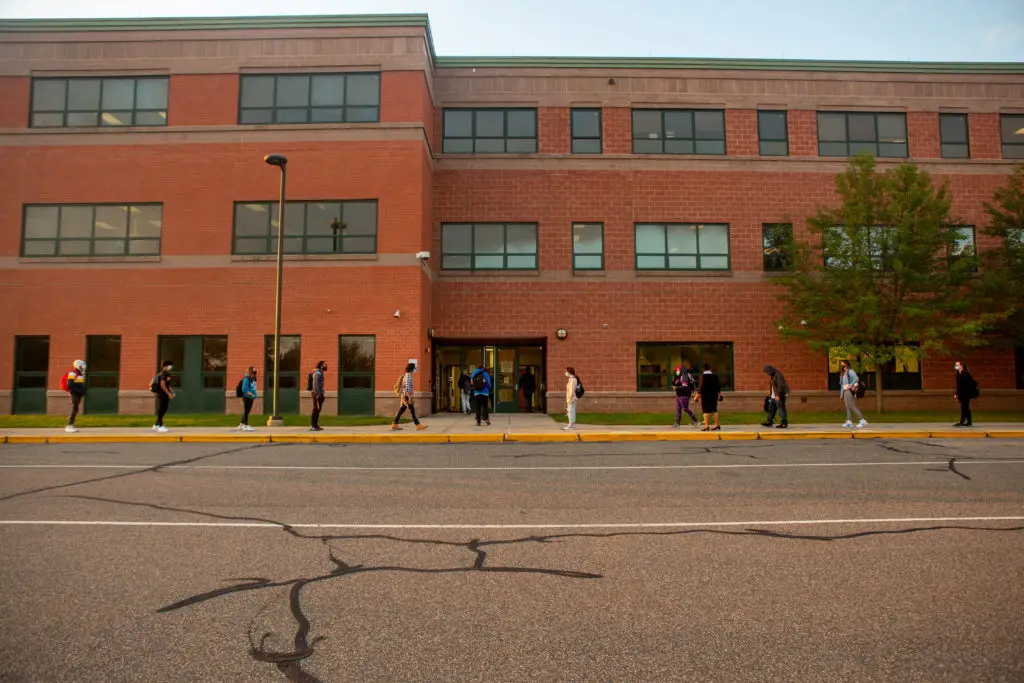School district leaders, still working to restore the learning children lost during the pandemic, are continuing to find the job even harder than expected. Our new report today details the concerns and ambitions of five school systems’ leaders and top administrators helping America’s children get back on track.
Before the beginning of the 2021-22 school year, we interviewed leaders of five public and charter school systems as part of the American School District Panel, a joint project with RAND Corp. They planned to follow an “acceleration strategy” designed to teach every child at grade level and address learning losses via instant interventions. The leaders pledged to avoid putting any student into a remedial track or instruction that focuses on below-grade level learning, which would separate them from regular class instruction.
Then the Delta wave of the Covid-19 pandemic hit, followed by the Omicron wave, which prompted some intermittent returns to remote schooling. Many district leaders, beset by public health crises, teacher shortages and political battles, told us they had to defer planned changes in instruction.
Our latest report represents another round of interviews with those same leaders and shows how much and how little changed from fall 2021 to spring 2022. When we interviewed district leaders again in the spring, they said little about the acceleration strategy. Instead, they told us that the 2021-22 school year was the most difficult they and their staff had ever experienced. Amid staff shortages, inconsistent student and teacher attendance, and a lack of reliable data about student performance, districts struggled to provide the extra training and support necessary for the ambitious instructional strategy.
Districts haven’t given up on restoring lost learning or improving classroom instruction. But to help students who spent months out of school, they’re applying high-dosage tutoring, project-based learning and career-infused education in a piecemeal fashion, rather than pursuing academic acceleration as a comprehensive approach.
Superintendents are also seeking better and more timely evidence on children’s progress and needs. They are developing new data systems to track implementation and evaluate program investments. Many are also increasing outreach to parents to improve student attendance and stem enrollment shifts. Senior leaders are collaborating in new ways to support staff and reduce bureaucratic inefficiencies.
The latest reflections from superintendents in spring 2022 continue to underscore the challenges districts are facing on the long road to pandemic recovery. Given the tumult, they’ve done a great deal. They’ve also realized that learning recovery will take years, not months. In the interim, they are setting short-term goals and helping staff celebrate small victories, including improvements on measures of progress.
Yet recent results from the National Assessment of Educational Progress show that learning losses are deep and need increased attention. As usual, the children who have missed the most are the ones with lower test scores to begin with — often students of color, those with disabilities and those from low-income families. Nationally and among the districts we studied, students’ annual growth rates in English and language arts are better than they were a year earlier, but they are nowhere near pre-pandemic levels. The slow pace of academic recovery could hurt older students approaching or overdue for graduation, who have little time to recapture missed skills.
“We aren’t talking enough about the level of self-awareness our older kids have about what they’ve lost out on and the lack of preparation they feel for the work that they’re doing right now,” one superintendent in our panel said. “These are hard-working kids, but they know they haven’t been as prepared as they would’ve been.”
Learning acceleration has been championed by the U.S. Department of Education as one of several evidence-based strategies to swiftly help children catch up. And an increasing number of large U.S. districts say they plan to use their federal Covid relief money to implement the strategy, according to our latest national review of spending plans.
But as our three waves of interviews with these school system leaders have made clear, planning and doing are different. Ongoing staffing concerns, student absences and enrollment declines may continue to stymie the most effective instructional techniques. District leaders have shown grit and determination, but the problem of learning loss has not yet been solved.





